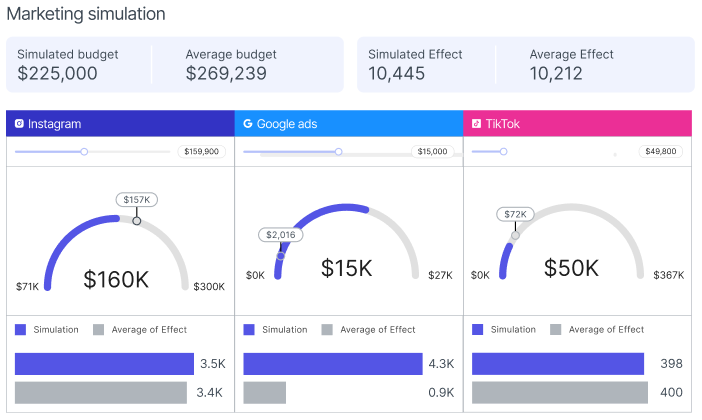Over the past three weeks, I have read at least five blog posts and three ebooks about customer data platforms, or CDPs. This technology is certainly rising in significance.
Not familiar with CDPs? A CDP allows marketers and customer success teams to collect and unify first-party data. With that combined data, you can build a comprehensive view of each of your customers.
From a marketing perspective, a tool like a CDP can be extremely useful. Teams can build enriched profiles and personas to support personalized marketing campaigns, identify high-value customers, and build look-alike audiences.
I have never used a CDP. But over the last few weeks, I’ve done some research and heard great success stories.
- Oracle states that when it comes to CDPs, marketers who have mastered personalization drive 5 to 15 percent increases in revenue and 10 to 30 percent increases in marketing spend efficiency.
- Tealium says in their fourth “State of the CDP” report that CDP users show greater confidence in their decisions, better ability to manage spending, and healthier budgets. Most importantly, they see a more significant return on their marketing dollars than organizations with little or no CDP usage.
- Coca-Cola recently announced they now use CDP to connect 2 billion customers with 250 products across 200 countries.
These are great stats that every brand should consider regarding making the most of customer data and driving a holistic view of customers.
Where CDPs get it wrong
It’s hard to determine the future opportunity any technology will provide. But one thing is for sure: There’s a great appetite for CDPs in the market. The addressable market size was roughly $4.8B in 2022, projected to grow to a whopping $19.7B by 2027. That’s an impressive growth rate and shows significant interest in the space.
However, my concern with CDPs — and why I have never invested in one — is based on the premise of creating profiles. During my tenure in marketing, I’ve never been given a goal to create the most holistic, unified view of each customer. Instead, my goal has always been increasing the customer base, driving higher returns on effective advertising spend, and sourcing more sales. To be frank, my goal is driving profits, not creating profiles.
From this perspective, I think this is where CDPs get it wrong. As budgets are more closely scrutinized, leadership will examine the outcomes of adtech products and make cuts. And marketing teams are already increasing their reliance on martech tools, which are wildly underutilized. According to a recent Gartner survey, marketers use only 42% of their martech stack’s capabilities.
So with technology underutilized, it’s hard to justify a shiny new object that can cost up to $65K monthly. That’s especially true when nearly one-third of CDP deployments fail.
To me, CDPs feel like a risky bet, and a long one at that. In the report mentioned above, Tealium mentions it can take up to a year for a CDP to return value. A year! In today’s economic environment, that’s just too long.
Stop profiling and start predicting
I’m biased because I work for a predictive analytics company. But in my opinion, marketers should spend less time on profiling and instead pay more attention to platforms that allow you to predict the future return of a customer, campaign, or ad channel.
Overall, we should be focused more on predicting customer behavior, not profiling customers, for two main reasons:
- Time to value. A CDP has a time-to-value of a year. Predictive analytics tools can drive time to value within the first 30 days of a fully deployed model.
- Flexibility. CDPs aren’t that flexible. They’re meant to build holistic profiles of a customer. Predictive analytics, on the other hand, can model your data for several use cases. Examples include campaign ROAS, marketing mix modeling, overcoming SKAN limitations, demand forecasting, and more. The uses are determined by the analysts who build and deploy the models, and can be prioritized according to business needs.
Overall, you can do more with your data and accelerate time to value with a predictive analytics tool than you can with a CDP.
The right tool for marketing’s job
Creating campaigns is one of the most liberating and creative aspects of marketers’ jobs. Having additional foresight at launch about how a campaign will perform over time will not only support marketers in reaching goals and using budget more effectively. It also will help in developing longer-term creative platforms. CDPs don’t assist in that process.
In the Mad Men days of advertising, we looked at our campaigns like pieces of art. Campaign ideas would last for decades and become symbols for the brands. But now, in the internet age, campaigns barely last 10 seconds, let alone 10 years.
If we can start predicting campaigns’ long-term future success, marketers can start creating advertising campaigns with greater lifespans. The data will tell us to keep the campaign live longer, giving it time to return value over an extended period.
Equipped with this future perspective, we can stop looking at campaigns as mere, single TikTok videos. We can start developing campaigns that stand the test of time like those of the past. Campaigns like “Just Do It,” “Think Different,” and “Got Milk?” — these campaigns meant something, shaped culture, created memories, and connected with audiences uniquely while also driving strong brand differentiation.
Predictive analytics lets marketers think differently. We can answer the ROAS question early, justifying larger ad budgets and more elaborate creative experiences. CDPs may show you lots of information about individual customers. But if you value how marketing combines the impact of data and creativity for your business, predictive analytics offers far more opportunity.
Seize that predictive opportunity today. Get in touch to learn what Pecan can do for marketers.



